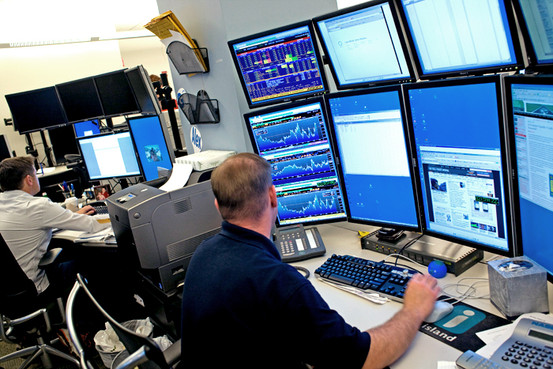High Frequency Trading (HFT) occurs faster than human response times – often quoted as 750 milliseconds. It is machine or algorithmic trading, as Sean Gourley’s “High Frequency Trading and the New Algorithmic Ecosystem” highlights.
This is a useful introductory video.
It mentions Fixnetix’s field programmable array chip and new undersea cables designed to shave milliseconds off trading speeds from Europe to the US and elsewhere.
Also, Gourley refers to dark pool pinging, which tries to determine the state of large institutional orders by “sniffing them out” and using this knowledge to make (almost) risk-free arbitrage by trading on different exchanges in milliseconds or faster. Institutional investors using slower and not-so-smart algorithms lose.
Other HFT tractics include “quote stuffing”, “smoking”, and “spoofing.” Of these, stuffing may be the most damaging. It limits access of slower traders by submitting large numbers of orders and then canceling them very quickly. This leads to order congestion, which may create technical trouble and lagging quotes.
Smoking and spoofing strategies, on the other hand, try to manipulate other traders to participate in trading at unfavorable moments, such as just before the arrival of relevant news.
Here are some more useful links on this important development and the technological arms race that has unfolded around it.
Financial black swans driven by ultrafast machine ecology Key research on ultrafast black swan events
Nanosecond Trading Could Make Markets Go Haywire Excellent Wired article
High-Frequency Trading and Price Discovery
Defense of HFT on basis that HFTs’ trade (buy or sell) in the direction of permanent price changes and against transitory pricing errors creates benefits which outweigh adverse selection of HFT liquidity supplying (non-marketable) limit orders.
The Good, the Bad, and the Ugly of Automated High-Frequency Trading tries to strike a balance, but tilts toward a critique
Has HFT seen its heyday? I read at one and the same time I read at one and the same time that HFT profits per trade are dropping, that some High Frequency Trading companies report lower profits or are shutting their doors, but that 70 percent of the trades on the New York Stock Exchange are the result of high frequency trading.
My guess is that HFT is a force to be dealt with, and if financial regulators are put under restraint by the new US Congress, we may see exotic new forms flourishing in this area.
